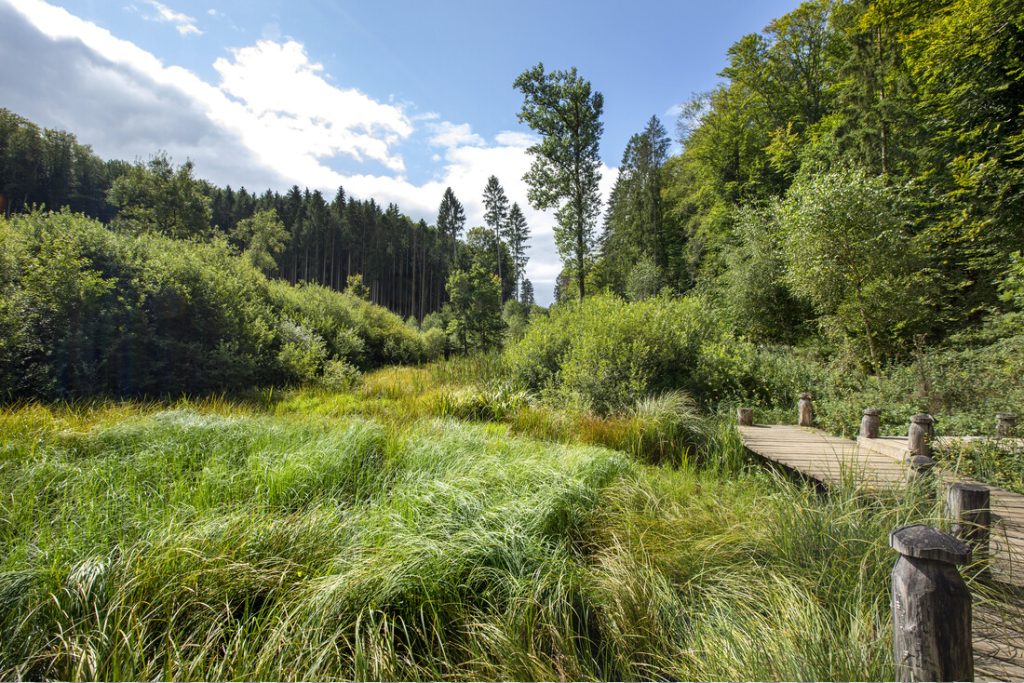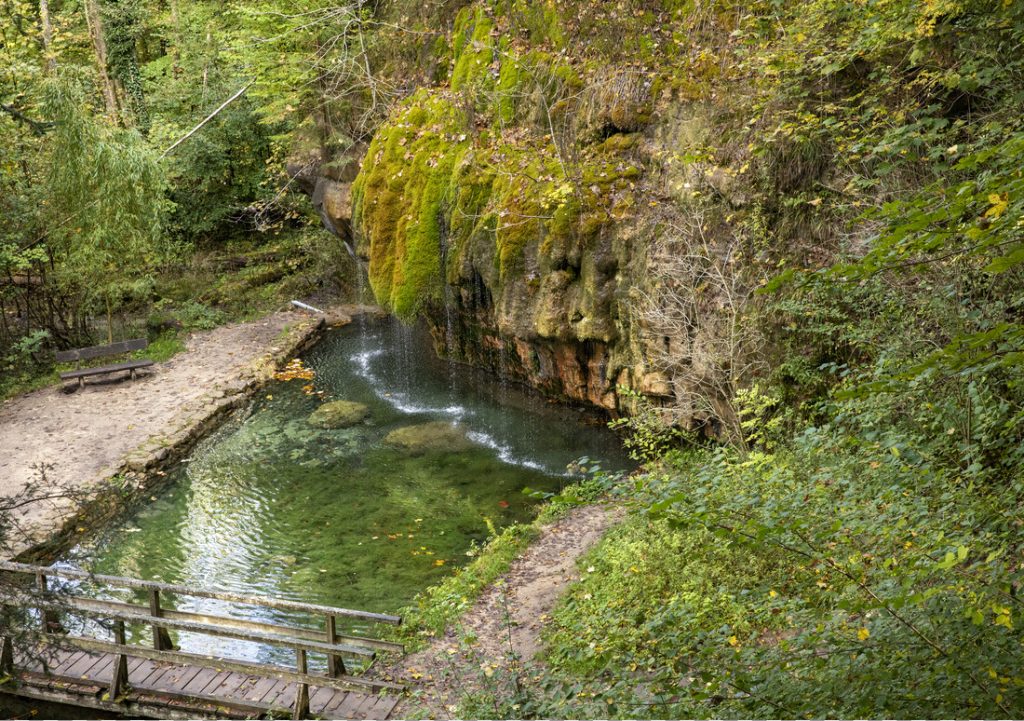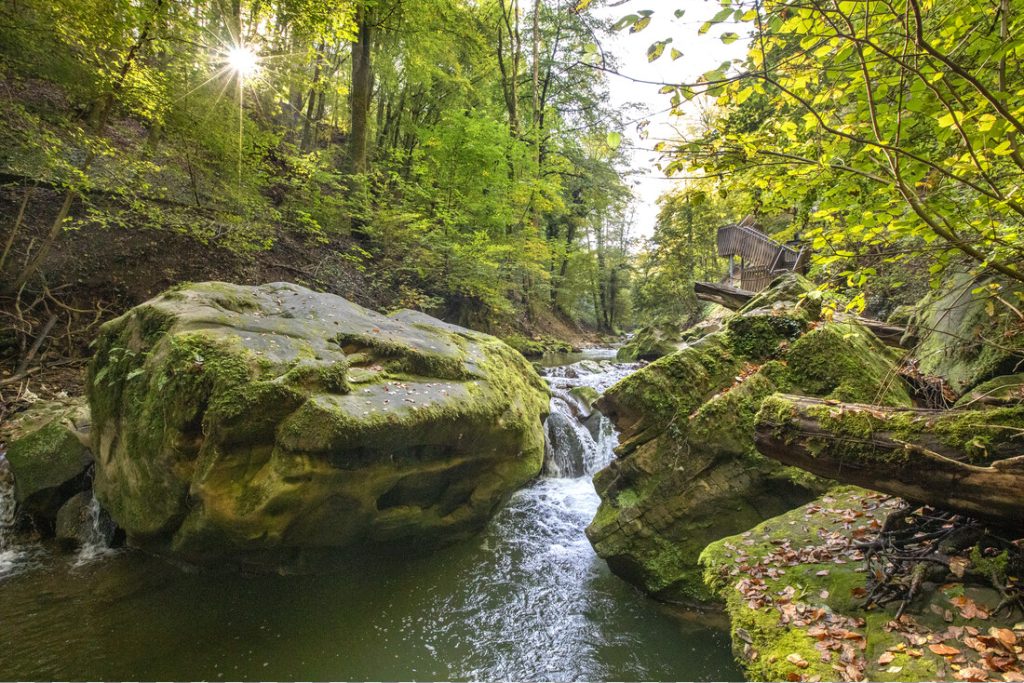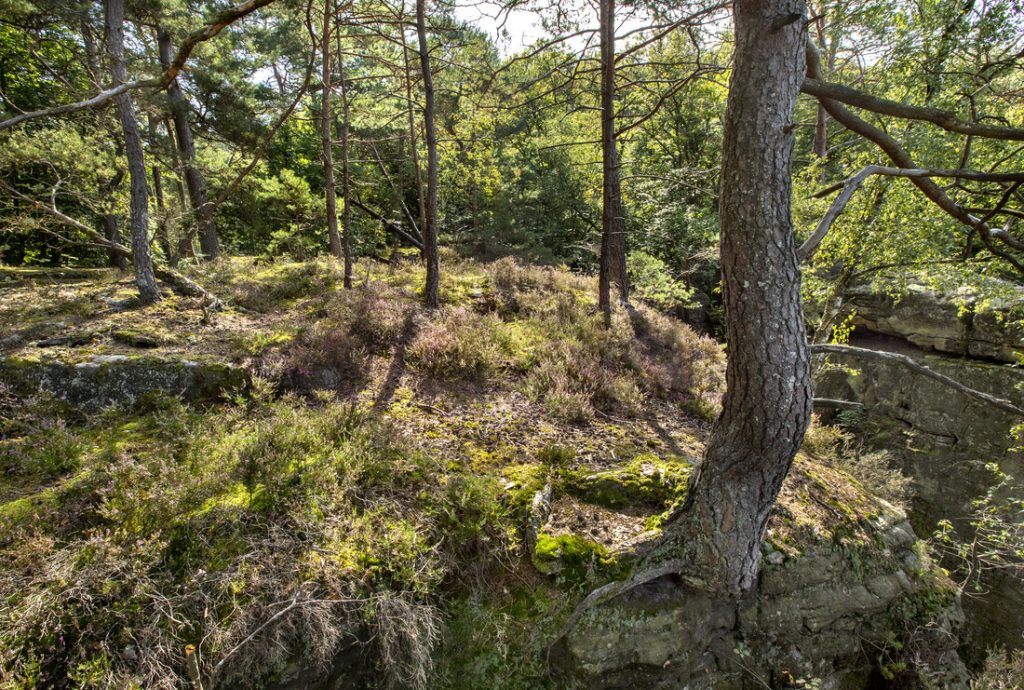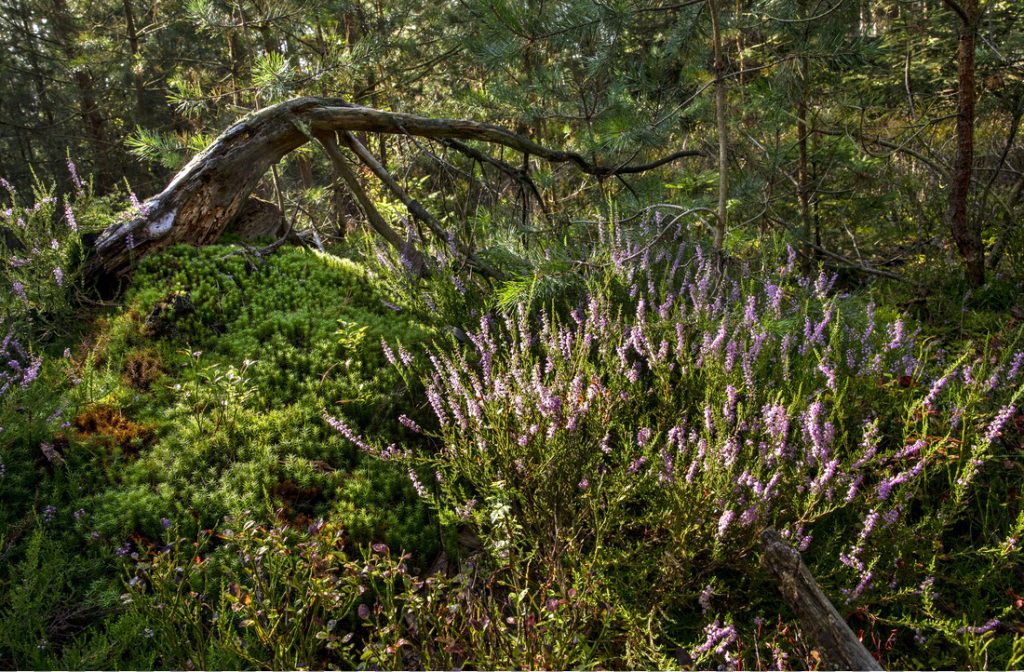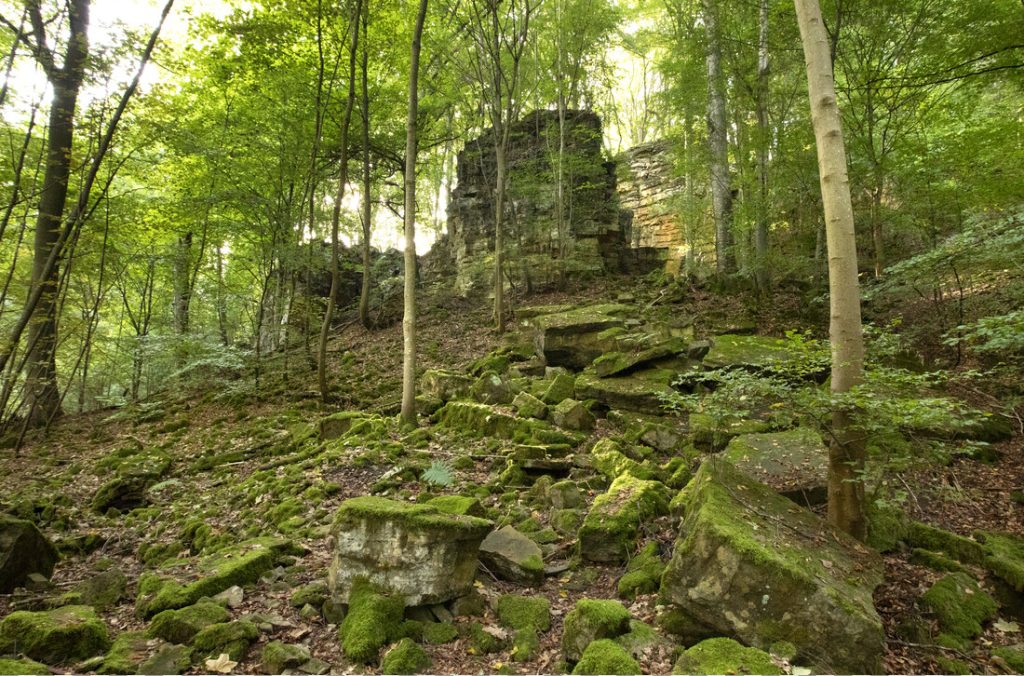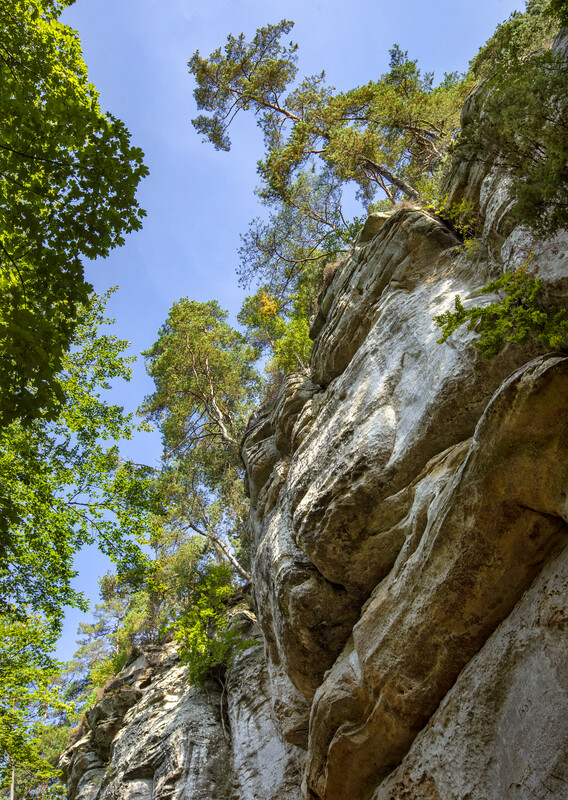Area: 4195.19 ha (of which COPIL Natura 2000 Mëllerdall is responsible for about 4152 ha)
Brief description (cf. SDF end 2018-15/03/2019):
- The valley of the Black Ernz and its tributaries, cut deep into the sandstone in the heart of the Müllerthal.
- The area is predominantly wooded (around 80%, consisting mainly of Luzulo-Fagetum and Asperulo-Fagetum beech forest). The Elteschmuer here is almost the only example of bog woodland in Luxembourg.
- Typical of the Müllerthal is the high proportion of rocky habitats and caves, so the protected area is also very important for its many rare ferns (incl. the Killarney fern, Trichomanes speciosum) and mosses and also for rock breeding birds such as eagle owls, and for various species of bat that find places to overwinter here.
- Agricultural land use (mainly in the form of permanent pasture) is confined to the flatter parts of the protected area, where there are also still many meadow orchards.
The main targets for protection (under the ban on deterioration) in this area are the following habitats and species (see also RGD 6.11.2009):
- the water quality of the Black Ernz, the Aesbaach, the Lauterbornerbaach and their tributaries,
- various freshwater habitats,
- the population of certain aquatic species such as the brook lamprey and the great crested newt,
- various kinds of woodland such as riparian forest,
- rocky habitats such as limestone or silicate rock with rock cleft vegetation, and caves,
- various kinds of grassland and heathland vegetation (including chalk heath),
- various kinds of moorland habitats, including petrifying springs with tufa formation,
- the population of certain bat species, including Bechstein’s bat,
- Dicranum viride moss and the Killarney fern
You can find the management plan for the FFH region LU0001011: Valley of the Black Ernz / Beaufort / Berdorf here.
